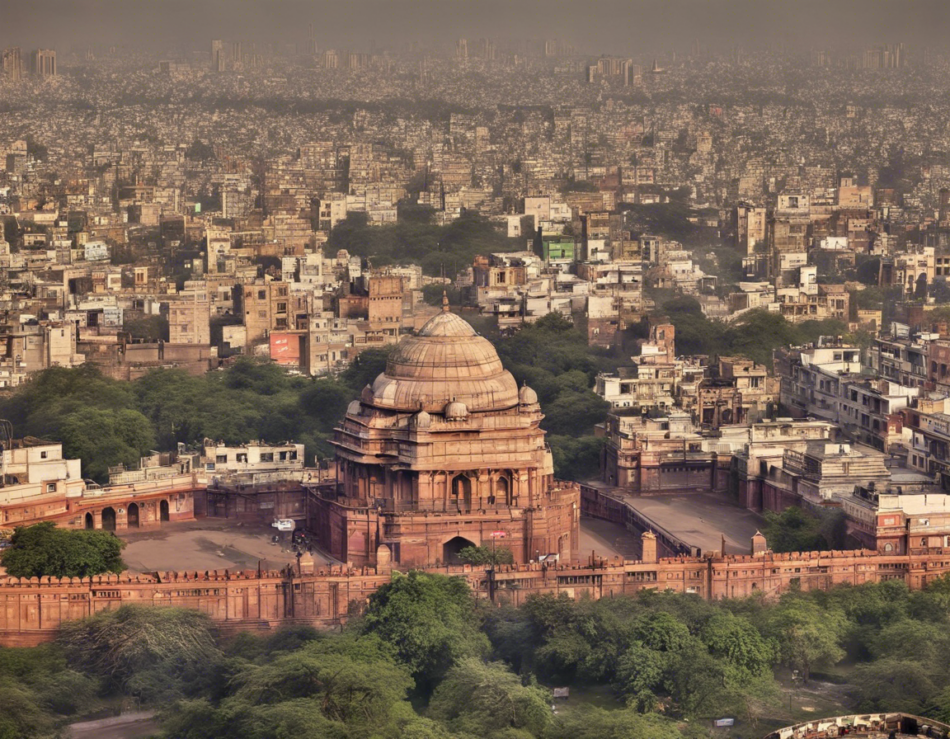Nestled in the heart of India, Delhi is a city known for its rich history, vibrant culture, and diverse cuisine. However, one aspect of Delhi that often goes unnoticed yet significantly impacts its residents is the ever-changing weather. Those who live in or have visited Delhi can attest to the extreme variations in temperature, humidity, and precipitation that the city experiences throughout the year. From scorching summers to chilly winters, Delhi’s weather plays a crucial role in shaping the daily lives of its inhabitants.
Understanding Delhi’s Climate
Delhi’s climate can be classified as semi-arid. The city experiences four distinct seasons: summer, monsoon, autumn, and winter. Each season brings along its unique weather patterns and challenges.
1. Summer
Delhi summers typically start in April and last until June. This period is characterized by extreme heat with temperatures soaring above 40 degrees Celsius. The hot winds, known as loo, can make it unbearable to step out during the day. Heatwaves are not uncommon during this time, leading to health issues such as heat strokes and dehydration.
2. Monsoon
The monsoon season in Delhi spans from July to September. This is when the city receives the majority of its annual rainfall. The monsoon showers provide relief from the scorching heat, but they also bring along waterlogging and traffic jams. Humidity levels are high during this time, adding to the discomfort.
3. Autumn
Autumn in Delhi, which lasts from October to November, is a short and pleasant season. The temperatures are mild, and the city experiences clear skies. This is often considered the best time to visit Delhi, as the weather is conducive for outdoor activities and sightseeing.
4. Winter
Winter sets in Delhi from December and lasts till February. The temperatures drop significantly during this season, with fog being a common occurrence in the early mornings. Dense fog can disrupt air and rail travel, leading to delays and cancellations.
Factors Influencing Delhi’s Weather
Several factors contribute to the ever-changing weather patterns in Delhi. Understanding these factors can help predict and prepare for the fluctuations in climate.
1. Geographical Location: Delhi’s proximity to the Thar Desert in the west and the Himalayas in the north affects its weather. The desert brings in dry and hot winds, while the mountains influence the cold waves in winter.
2. Monsoon Winds: The arrival of the southwest monsoon winds from the Arabian Sea brings rainfall to Delhi during the monsoon season. The timing and intensity of these winds play a crucial role in determining the amount of rainfall the city receives.
3. Pollution: Delhi’s air pollution levels have a direct impact on its weather. The smog caused by vehicular emissions and industrial activities worsens during winter, leading to decreased visibility and health hazards.
4. Urban Heat Island Effect: The concrete jungle of Delhi absorbs and retains heat, leading to higher temperatures in urban areas compared to rural areas. This phenomenon, known as the urban heat island effect, exacerbates the heat during summer.
Coping Strategies for Delhi’s Weather
Dealing with Delhi’s ever-changing weather can be challenging, but there are several strategies that residents and visitors can adopt to stay comfortable and safe throughout the year.
1. Stay Hydrated: During the hot summer months, it is essential to stay hydrated by drinking plenty of water and fluids to prevent dehydration.
2. Dress Accordingly: Wearing light and breathable clothing during summer and layering up during winter can help regulate body temperature and ensure comfort.
3. Use Sun Protection: In summer, using sunscreen, sunglasses, and hats can protect you from the harsh UV rays. Similarly, covering up during winter can help retain body heat.
4. Stay Informed: Keeping track of weather forecasts and alerts can help you prepare for extreme weather events such as heatwaves, heavy rainfall, or fog.
5. Air Quality Awareness: Monitoring air quality levels in Delhi and taking precautions such as using masks or staying indoors during high pollution days can safeguard your health.
FAQs About Delhi’s Weather
1. Is Delhi always hot?
Delhi experiences extreme temperatures throughout the year, with hot summers and cold winters. However, autumn and spring offer milder weather conditions.
2. Does Delhi get snow?
Snowfall is extremely rare in Delhi due to its semi-arid climate. However, the city may experience hailstorms during winter.
3. How bad is Delhi’s air pollution?
Delhi’s air pollution levels are among the highest in the world, especially during winter. The city faces smog and poor air quality, which poses health risks.
4. What is the best time to visit Delhi?
The best time to visit Delhi is during autumn (October-November) and spring (February-March) when the weather is pleasant and conducive for outdoor activities.
5. How can I prepare for Delhi’s weather fluctuations?
To prepare for Delhi’s ever-changing weather, stay updated on forecasts, dress according to the season, carry essentials like umbrellas and sunscreen, and maintain good hydration levels.
In conclusion, Delhi’s weather is as diverse and dynamic as the city itself. From battling extreme heat in summer to navigating through foggy winters, residents of Delhi have learned to adapt to the ever-changing climate. By understanding the nuances of Delhi’s weather patterns, implementing coping strategies, and staying informed, one can make the most of their time in this vibrant metropolis, regardless of the season.
